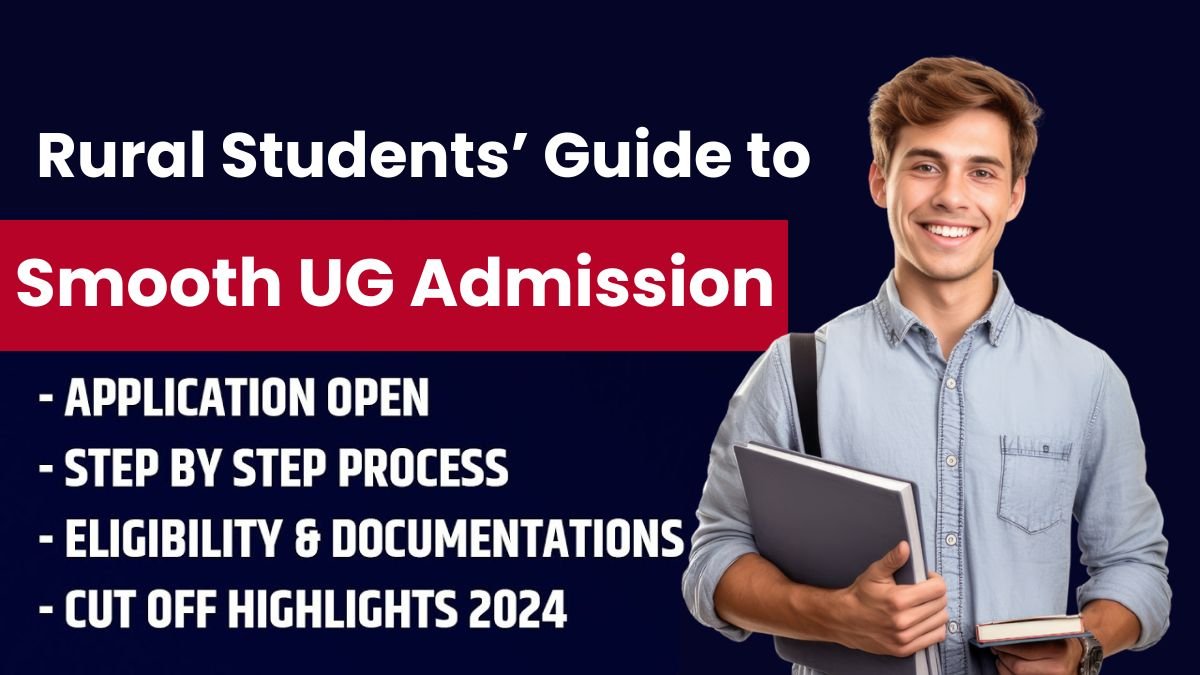If you’re from a village or a small town and dream of studying abroad in a UG (Undergraduate) course, the admission process may seem overwhelming. Although it sounds simple, applying to colleges overseas involves many important steps. In this guide, we’ll explain everything in a clear and simple way — from timelines to documents — so you can reach your goal without confusion or delay.
What Does the UG Admission Process Involve?
Taking admission into an undergraduate program abroad isn’t a single-step task. It includes selecting the right college, preparing entrance tests, submitting documents, and writing essays. You need to follow a systematic process to complete everything smoothly and on time.
Why Following a Timeline is Crucial
A timeline helps you decide what to do and when. For example, before applying, you must research colleges, appear for necessary exams, gather paperwork, and complete everything before the deadline.
By sticking to a timeline:
- You can finish every task without last-minute stress.
- It helps you apply for scholarships and financial aid on time.
- Essay writing and test preparation becomes manageable.
- You avoid careless errors and missed opportunities.
For instance, if you need three months to study for the SAT, it’s important to know the exam date in advance so you can plan your preparation accordingly.
Key Stages of the UG Admission Journey
1. Research and Planning Stage
During this phase, you:
- Explore colleges and available courses.
- Identify your field of interest such as business, science, or arts.
- Read about professors, student experiences, and facilities.
- Begin preparing for SAT, IELTS, or TOEFL.
- Search for scholarships and aid programs.
This stage is crucial because it builds the base for your admission journey.
2. Application Submission Stage
This phase involves completing and submitting the following:
- Personal Information (Name, Address, Contact Info)
- Educational Documents (Class 10 and 12 mark sheets)
- Test Results (SAT, IELTS, TOEFL scores)
- Letters of Recommendation (from teachers or school head)
- Well-written Personal Essays
Since each document has its own deadline, early preparation is essential.
3. Evaluation Stage
The university will now review your submitted application. They will look at:
- Your participation in extracurricular activities.
- Your academic scores and consistency.
- The thoughts and personality shown in your essay.
Based on this, the college decides whether to accept your application.
4. Admission Decision Stage
You may receive one of these three outcomes:
- Admit: You are accepted by the university.
- Waitlist: Your selection is pending and may happen later.
- Reject: Your application has not been successful.
If you get accepted by multiple colleges, choose the one that fits your future goals.
5. Final Enrollment Stage
Once you’ve selected your college, you’ll need to:
- Pay the required admission fee.
- Arrange hostel or housing facilities.
- Submit visa documents, insurance, and financial proof.
This stage marks the beginning of your college life.
List of Required Documents and Deadlines
| Document | Important Notes |
|---|---|
| Personal Info | Ensure name, address, DOB match on all forms |
| Academic Records | Upload board certificates within the deadline |
| Test Scores | Complete SAT, IELTS, TOEFL early and send scores to colleges |
| Recommendation Letters | Request from teachers in advance to avoid delays |
| Essays | Write thoughtfully; edit and revise before final submission |
| Financial Aid Forms | Apply using FAFSA or CSS Profile depending on the college |
Types of Applications and Their Deadlines
1. Early Decision (ED)
This type is binding — if accepted, you must attend that college.
Deadline: November or December
Results: By January
2. Early Action (EA)
Non-binding — you can decide later whether to accept.
Apply early to receive quicker decisions.
3. Regular Decision (RD)
The most commonly used method.
Application Deadline: January to February
Result Declaration: March or April
4. Rolling Admissions
No fixed deadline — seats are filled on a first-come-first-serve basis.
Apply early to increase your chances.
Understanding Financial Aid and Scholarships
FAFSA and CSS Profile
FAFSA is a must for those applying in the US and starts in October each year. Some colleges also ask for the CSS Profile, which has its own dates.
Tip: Apply as early as possible to maximize your chances of getting aid.
Steps to Get a Scholarship
- Check each college’s official site and scholarship portals.
- Explore opportunities from NGOs, government programs, or local trusts.
- Submit applications and documents before the final date.
Final Thoughts – Planning Brings Success
Getting into an undergraduate program abroad is a detailed process but very much possible — even for students from rural backgrounds. With access to the internet, smart planning, and consistent preparation, you can achieve your dream. All you need is a timeline, effort, and confidence.

Aryan Jain writes easy-to-understand posts on college admissions and career tips. He loves helping students find the right path and make smart choices for their future.
